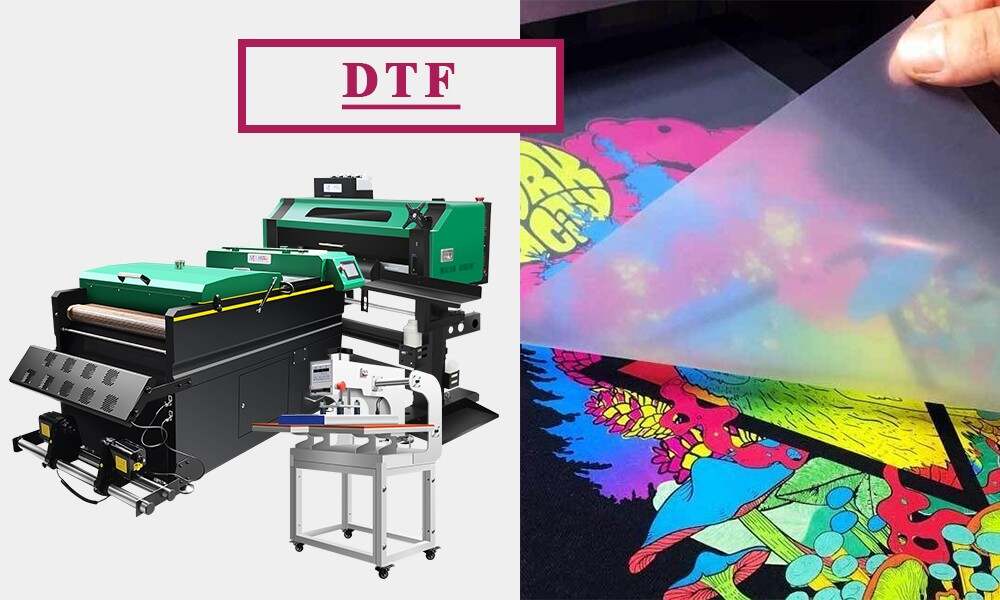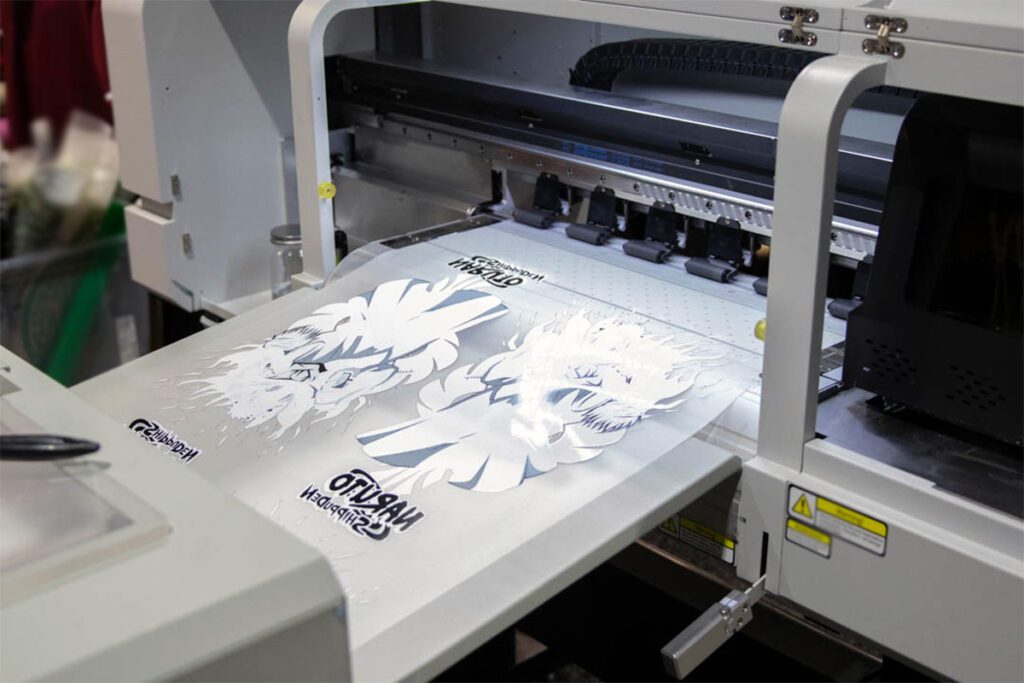The Future of Style: Exploring DTF Printing Modern Technology in the Textile Sector
In recent times, the fabric industry has actually witnessed a marked change in the direction of innovative modern technologies that are improving the landscape of fashion manufacturing. Among these innovations, Direct to Movie (DTF) printing technology has become a promising contender, supplying distinct capacities and opportunities for designers and suppliers alike. This advanced printing technique has actually sparked passion because of its possible to revolutionize standard fabric printing procedures. As we explore the effects and opportunities of DTF innovation in the realm of fashion, it ends up being noticeable that its integration could redefine market requirements and lead the means for a new age of innovative expression and performance.
Advancement of Fabric Printing
From the old worlds using strategies like block printing to the electronic revolution of today, fabric printing has constantly pressed limits. As the craft spread to other components of the world, new approaches such as screen printing and roller printing emerged throughout the Industrial Revolution, revolutionizing the fabric industry.
The introduction of electronic textile printing in the late 20th century marked a considerable change towards more lasting and flexible printing methods. The development of fabric printing showcases a rich history of imagination, resourcefulness, and technical progress in the world of fashion and layout.
Advantages of DTF Technology
With the development of textile printing strategies from old approaches like block printing to modern developments such as electronic printing, the intro of Direct-to-Fabric (DTF) modern technology has actually dramatically enhanced the efficiency and sustainability of textile printing processes. One of the main benefits of DTF innovation is its capability to straight publish designs onto material without the need for transfer papers, which reduces waste and simplifies the production procedure. Additionally, DTF printing allows for greater shade vibrancy and information precision compared to typical techniques, allowing textile producers to produce elaborate and top notch layouts effortlessly.
Moreover, DTF modern technology is recognized for its convenience, as it can be made use of on different types of fabrics, consisting of all-natural fibers like wool, silk, and cotton, as well as artificial materials such as polyester and nylon (DTF Printing). This adaptability opens a wide variety of possibilities for developers and suppliers to experiment with different appearances and materials, bring about more special and ingenious products in the style market. Overall, the execution of DTF innovation stands for a considerable development in fabric printing, providing numerous benefits that contribute to the future sustainability and creative thinking of the industry
Sustainability in vogue Production
Stressing green methods is extremely important in contemporary style production, aligning with the expanding customer demand for lasting products. Recently, the apparel industry has actually faced boosting examination because of its significant ecological effect, consisting of excessive water usage, chemical air pollution, and textile waste. As an action, many fashion brand names are currently incorporating sustainable methods right into their production processes to decrease harm to the atmosphere.
Sustainability in vogue manufacturing encompasses different facets, such as using organic and recycled products, reducing energy usage, applying ethical labor practices, and promoting openness throughout the supply chain. In addition, developments in modern technology, like DTF printing, deal possibilities to further enhance sustainability in textile manufacturing. This innovation allows exact printing on textiles, lowering ink wastage and water use compared to conventional printing techniques.
Layout Liberty and Modification

Moreover, DTF printing promotes personalization on a scale formerly unattainable, enabling Website personalized apparel and unique items tailored to specific choices. Consumers can currently actively take part in the style procedure, producing garments that reflect straight from the source their design and personality. This customization not just improves the customer experience however also advertises a feeling of exclusivity and originality in a market saturated with mass-produced clothing. Overall, DTF printing modern technology transforms the layout landscape in the textile sector, providing countless possibilities for imaginative expression and customized style.
Influence On Supply Chain & Market Trends
DTF printing modern technology in the fabric market is reshaping supply chain characteristics and affecting market fads via its effectiveness and personalization capabilities. By enabling on-demand printing and removing the demand for big inventories, DTF technology simplifies the supply chain procedure.
Furthermore, the customization potential of DTF printing modern technology is reinventing the market trends in the fabric industry. Customers progressively seek customized and unique items, and DTF enables brand names to offer custom styles cost-effectively. This customization capacity not only boosts client complete satisfaction yet likewise opens up brand-new opportunities for services to deal with particular niche markets and distinguish themselves from rivals. Because of this, DTF modern technology is driving a shift in the direction of more customer-centric and cutting-edge techniques within the textile market, forming the future of fashion.

Conclusion
Finally, DTF printing modern technology is transforming the fabric sector by offering many advantages such as design sustainability, personalization, and flexibility. This cutting-edge modern technology is reshaping the future of fashion production, affecting supply chains, and driving market patterns in the direction of extra environmentally friendly and effective methods. As the market remains to advance, DTF printing will certainly play a crucial role in shaping the way textiles are produced and consumed in the years to come.
From the ancient civilizations using techniques like block printing to the electronic revolution of today, fabric printing has consistently pushed borders. As the craft spread to other components of the globe, brand-new techniques such as display printing and roller printing arised throughout the Industrial Transformation, reinventing the textile sector.
The introduction of electronic fabric printing in the late 20th century marked a considerable Full Report shift in the direction of even more lasting and flexible printing approaches.With the development of textile printing techniques from old approaches like block printing to contemporary developments such as digital printing, the intro of Direct-to-Fabric (DTF) modern technology has dramatically enhanced the performance and sustainability of fabric printing processes (DTF Printing).In response to the essential change towards sustainability in fashion manufacturing, the adoption of cutting-edge innovations like DTF printing not only addresses ecological issues but additionally opens up methods for unequaled design liberty and personalization in the textile market